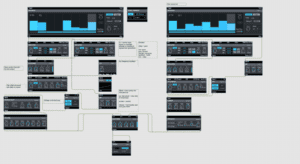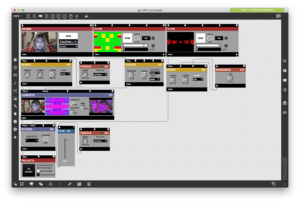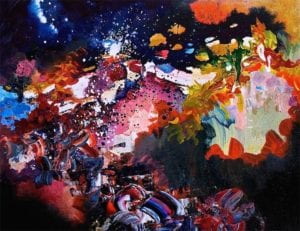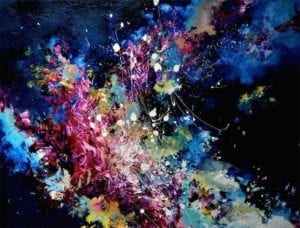Personal Reflection:
The piece I have chosen to research and reflect upon is Oskar Fischinger’s “Study No.7,” my favorite video out of the entire collection. When watching the videos in class, Fischinger’s film intrigued me the most and left a lasting impression on both my eyes and my mind. Its simplistic choices of color and object designs allow the piece to stand out against the colorful and chaotic compilations of either Norman McLaren or Walther Ruttmann. The entirely black and white video was the only video I thought worked best with its choice of music (usage of music). The rough-edged white strokes, waves, curls, and rectangles moved in a fluid-like motion, reappearing and disappearing to the sound of the music, almost as if they were dancing to it.
History (Research):
Created in 1931, “Study No. 7” is just a small piece of a larger collection. The film originates from a series of abstract Studies created and synchronized to a mixture of both popular and classical music in the 20th century. The 12 piece series received worldwide recognition throughout the 1930s and proved Fischinger to be an artistic staple in the world of abstract film and a pioneer in music videos. Fischinger strongly believed that art should be a pleasurable experience, which is a notion he applied in all of his “study” films. The music used in “Study No.7” is the classic, Hungarian Dance No. 5, a soundtrack radiating both energy and happiness.
Artistic Procedure:
Through extensive research, little to no information was found on the step by step procedure taken by Fischinger to complete the masterpiece that is “Study No.7” and its expansive series. Indeed, the accuracy of existing articles can not be confirmed, however, it is interesting to vision Fischinger dedicating his personal time to experiment with charcoal-on-paper animation, which ultimately resulted in The Study (As stated on Wikipedia). The artist was looking for something new and extravagant and was able to achieve this with simple yet innovative materials at the time. The usage of fixed and organic shapes dancing across the screen seems to depict the notions of freedom of thought, freedom of movement and freedom of imagination. It is a memorable piece in the archive of abstract film.
Arguments:
Some may argue however that Fischinger’s usage of simplistic visual information does not pay respect to the theme of synesthesia between visual and auditory senses. Whereas other artists in the compilation showed in class exercised radiant and eye-piercing colors, ranging anywhere from blue to purple to red and to yellow, Fischinger chose to stay within the shades of both black and white (Some would label, “playing it safe”). The usage of only these two colors causes absence in a synesthetic relationship between the film and its sound. In the first few weeks, I was able to view synesthesia through the lens of artistic creator, Melissa McCracken. I learned through her phenomenal condition, the mix of color and sound that were caused by misinterpretations of stimuli in the brain. This sensual stimulation between color and audio is not prominent in Fishinger’s art.
Works Cited:
“Oskar Fischinger’s Bibliography.” Fischinger – CVM Pages, Center For Visual Music, www.centerforvisualmusic.org/Fischinger/.
“Oskar Fischinger.” Wikipedia, Wikimedia Foundation, 24 July 2019, en.wikipedia.org/wiki/Oskar_Fischinger.
“Oskar Fischinger Study No. 7 (Excerpt).” Vimeo, Center for Visual Music, 1931, vimeo.com/342597616.





